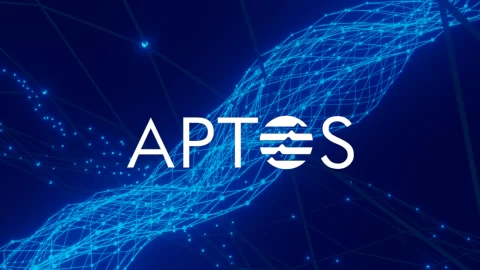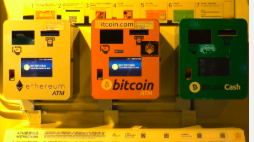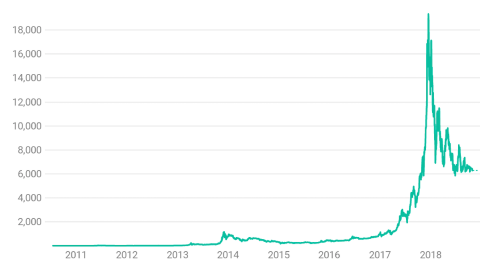Introduction
Since the centralized crypto exchange FTX first began its death spiral, there has been a vigorous discussion on how best to secure digital assets. Most users of the now-insolvent FTX will be lucky if they get any funds back at all, and many people are wondering what they can do to avoid this situation in the future. Sadly, it’s an unfortunate event in crypto history that is not isolated by any means. The list of crypto exchanges that got hacked or stole their users over the years is long and painful, including the likes of Mt. Gox, Binance, Cryptopia, Quadriga CX, to name a few.
The first rule of owning crypto is simple: making sure it is safe. This means different things for different investors, depending on how much responsibility they want to take on. When storing your cryptocurrency, you have two choices:
1) you can either let somebody else like an exchange keep custody of it in a custodial or hosted wallet where they control your crypto
2) you can set up your own wallet and self-custody your assets in what’s known as a private/unhosted/non-custodial wallet. These terms all mean the same thing, that only you, instead of some centralized entity, directly control your wallet and access to it. If you choose to self-custody your crypto, you next have to decide whether you want to use cold (offline) or hot (online) storage.
Cold storage refers to either a paper or steel wallet (a physical object that only stores your private key or recovery seed) or a hardware wallet, a dedicated electronic device that signs transactions without being connected to the internet and allows you to interact with decentralized marketplaces and protocols safely.
While cold storage is the safest option, it also comes with a hefty price tag due to the powerful hardware involved. Hot wallets are free software that allows you to interact faster and access more features in areas like Web3 and DeFi. They come with a bigger security risk though, therefore using a combination of cold and hot wallets is a good idea. Moreover, hot wallets can also be more centralized than we think, as MetaMask’s recent admission that it collects users’ IP addresses have shown.
This is why CoolWallet launched CoolWallet HOT, an exciting new hot wallet module, in December 2022 for its CoolWallet App (iOS/Android), allowing users to effortlessly switch between hot and cold storage by simply tapping the screen. This will allow all potential crypto investors to use the CoolWallet App, and hopefully, over time most users will use a combination of our cold and hot storage to safeguard and manage their crypto. The cold storage part of the app remains unchanged though.
Both custodial and non-custodial wallets have their pros and cons, and the right choice for you will depend on your individual needs, risk tolerance, and priorities. In this article, we’ll explain the differences between these two types of wallets and provide some information to help you make an informed decision. Let’s start right at the beginning.
What is a crypto wallet?
A cryptocurrency wallet is a digital tool that allows users to store, send, and receive digital assets like Bitcoin, Ethereum, and others. These assets are based on blockchain technology, a decentralized and transparent way of storing and sending data.
A crypto wallet includes a public address (or public key), which is used to receive funds, and a private key, which is used to access and spend the funds. The private key is a long string of numerals and letters that should be kept secret, as it’s the only way to access the funds associated with a particular public address. It’s crucial to protect your private key. Anyone who has access to it can control your funds.
Imagine your public key as similar to an email address (e.g. [email protected]) and the private key as the personal password that unlocks your email account. However, in this case, there is no centralized service provider like Google (Gmail) or your IT department to help you restore your password if you expose or forget it: when a private key is lost, the assets in that wallet are in all likelihood forever lost as well, as these crazy bitcoin private key crypto horror stories show.
Crypto wallets can come in a variety of forms, including software and hardware wallets, which are also known as hot and cold wallets. Hot wallets like MetaMask or Trust Wallet are applications that are connected online, while a cold wallet like the CoolWallet Pro is a credit-card-sized object that fits in your wallet or purse and does not have any internet connectivity.
Importantly, when setting up a new hierarchically deterministic (HD) wallet on your CoolWallet device, your private key is permanently “buried” inside its EAL6+ secure element (SE) microchip, where it can never be retrieved by anyone, not even you. This makes your recovery seed phrase the only means to restore your wallet account elsewhere if needed.
What are custodial crypto wallets?
A custodial wallet is a type of cryptocurrency wallet where private keys are managed and stored by a third party. This third party, typically a cryptocurrency exchange or financial institution, has full control over the private keys and can therefore access the funds stored in the wallet and illegally use them as they wish, as we’ve seen with FTX. This is something that the new Proof of Reserves movement, where exchanges publish a list of public wallet addresses to be monitored, is trying to deter.
One advantage of using a custodial crypto wallet is that they are convenient. It’s usually possible to withdraw from the custodial wallet to a bank account, and the exchange takes care of the key management for you. So long as they stay in business and don’t get hacked, everything should be fine. However, as we keep getting reminded, beginning with the Mt. Gox hack in 2014 and through FTX’s insolvency, bad things can and do happen at exchanges.
The other big benefits are geared more towards active traders, such as cheap transactions (usually 0.1% or less), and trading options such as limit, stop-loss, and OCO orders and margin trading.
The main disadvantage of using a custodial wallet is the user does not have direct control over their private keys. If the third party managing the keys is hacked or goes under, the user may lose access to their funds. It’s essential to check up on the audits, insurance, and reserves of any exchange offering a custodial wallet.
Additionally, custodial wallets may impose fees for their services, which can disadvantage those looking to minimize the costs associated with their cryptocurrency holdings.

DELIVERED EVERY WEEK
Subscribe to our Top Crypto News weekly newsletter
What are non-custodial wallets?
A non-custodial wallet is a cryptocurrency wallet where the user has direct control over their private keys. This means the user is solely responsible for storing and managing them and does not need to trust a third party. Non-custodial wallets can either be hot (internet-connected, making it riskier for hacks) or cold (completely offline). Hot wallets are software-only, while cold wallets can be anything from a written or printed piece of paper (paper wallet) to a dedicated device called a hardware wallet whose main purpose is to protect your funds from unauthorized access.
MetaMask is an example of a hot wallet that is non-custodial, while CoolWallet produces a line of non-custodial hardware wallets. To use certain crypto services like decentralized exchanges (DEXs) — for example, UniSwap (which currently pulls the most trading volume after Binance of all exchanges) and NFT marketplaces like OpenSea— it’s necessary to have a non-custodial wallet.
With these wallets, the user has complete control over their funds. This means that they are not at risk of losing them due to the incompetence or malfeasance of others. Additionally, non-custodial wallets typically do not impose any fees for their services.
One disadvantage of using a non-custodial wallet is it can be more challenging for those who are new to crypto. The user must keep track of their keys, and the technical aspects can be daunting to some. With the power to self-custody your own assets comes a great responsibility to secure them as much as possible. You are your own bank after all.
Last thoughts
Most people serious about crypto will be using both custodial and non-custodial wallets, as well as both hot and cold ones. Certain exotic trading features like crypto derivatives are only available on centralized exchanges, leading some users to park a portion of their funds in exchange-hosted wallets. While such practices are hard to avoid for professional traders, these people tend to be aware of the risks associated with exchanges and keep most of their crypto in a non-custodial wallet.
For those in the market for a cold-storage solution, the CoolWallet Pro is a non-custodial hardware wallet with an encrypted Bluetooth connection that allows you to check your portfolio and make transactions anywhere. It features staking, in-app integrations with the leading NFT marketplace and DeFi DEX support.
With the product’s upgraded chipset and high CC EAL6+ security rating, you can be confident that your funds are safe from hacks and other threats. It’s also thin and lightweight, just like a credit card. Get the rest you need knowing your funds are safe with the CoolWallet Pro.
If the bear market’s got its claws in you and you’re not ready to spend that much on a hardware wallet, try our CoolWallet App’s new HOT wallet module. Early users who try out its features can win NFT prizes and qualify for future airdrops as we move along our exciting 2023 CoolWallet roadmap.



